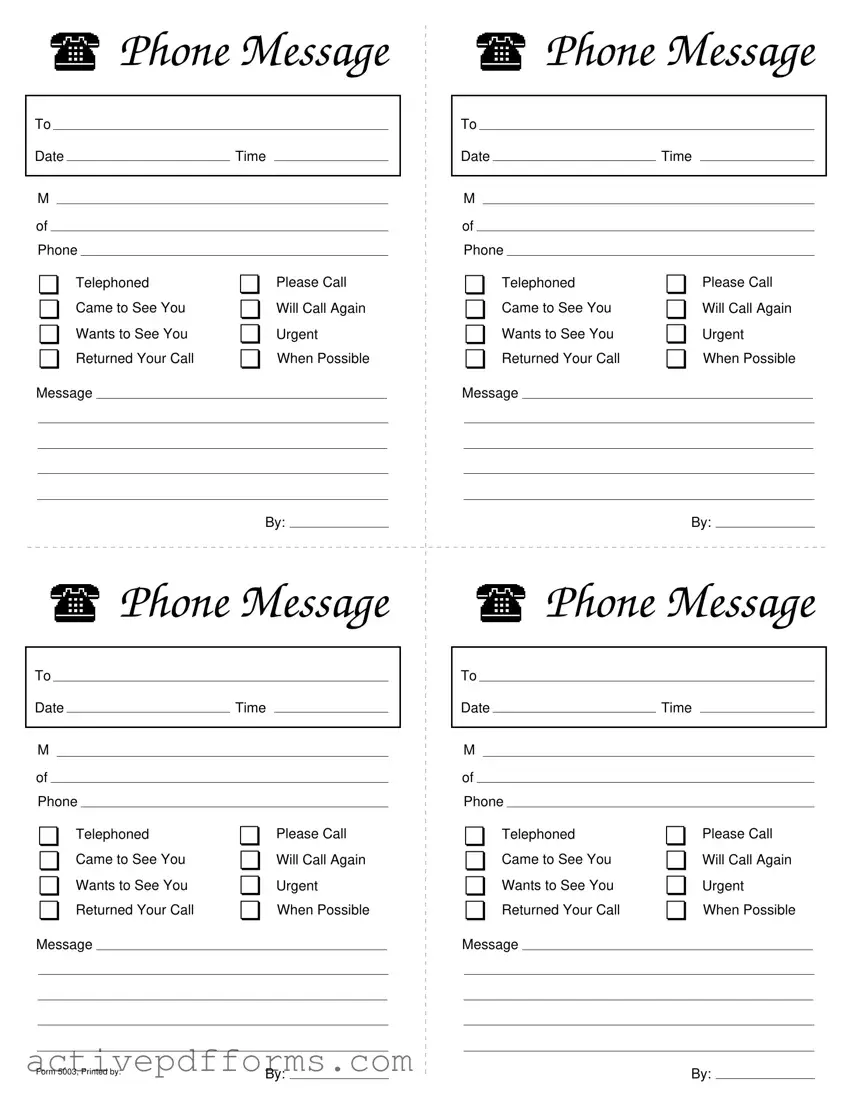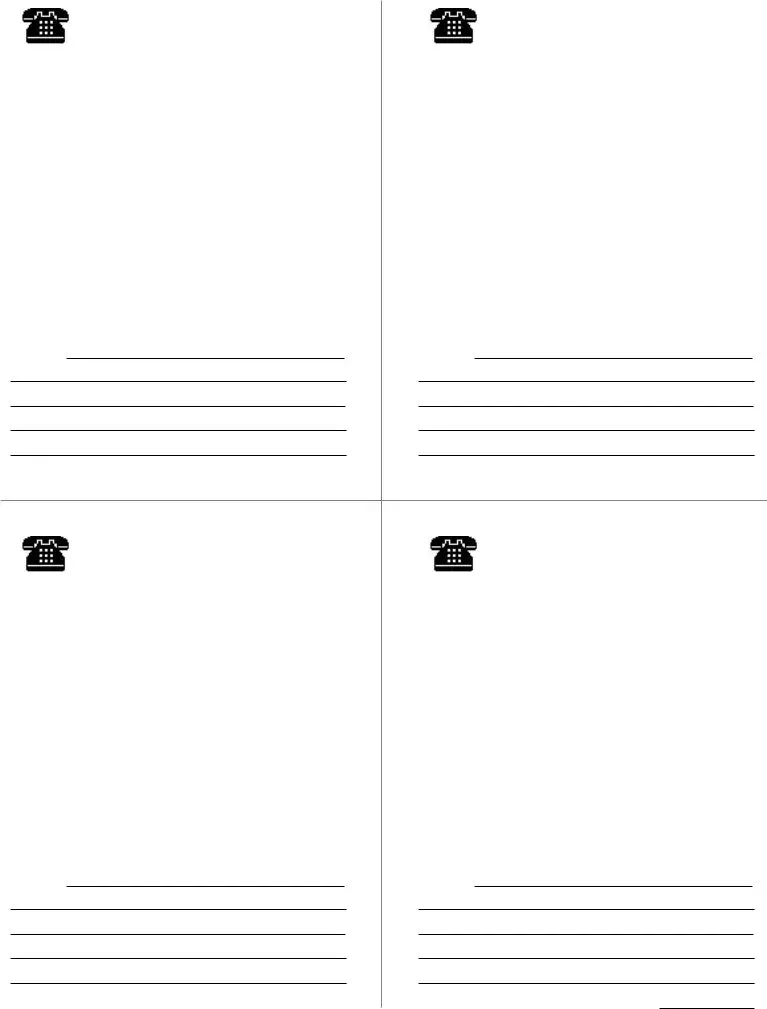In the era of rapid digital communication, the simplicity and clarity of phone message slips remain invaluable for effective interpersonal communication, particularly in professional settings. These slips, typified by the ubiquitous Form 5003, serve as a tangible record of missed calls, encapsulating essential details that include the identity of the caller, the intended recipient, the date and time of the call, and the nature of the message. Key checkboxes such as "Telephoned," "Please Call," "Came to See You," "Will Call Again," "Wants to See You," "Urgent," "Returned Your Call," and "When Possible" quickly convey the caller's intent, enabling the recipient to prioritize and respond accordingly. Additionally, the "Message By" section ensures accountability and follow-up. Despite the proliferation of digital notification systems, these slips underscore the importance of clear, concise communication in professional environments, reminding us that sometimes, simplicity can enhance efficiency and clarity in our interconnected world.

